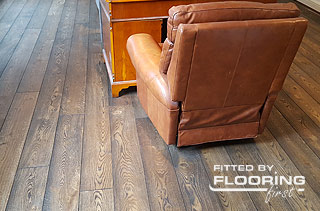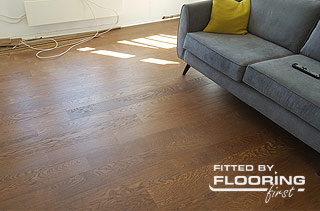The Wood Floor Installation Process
Installing solid, hardwood floor is virtually the greatest flooring option you can go for. Nothing compares to the natural beauty of solid wood, but having a great looking floor does not mean just buying the flooring, but having it installed professionally by fitters who possess the necessary skills and experience and use the right machinery and flooring materials. Hardwood was extremely popular, then vinyl and linoleum appeared and the popularity of natural wood began to decline. In the last 10 years, however, natural wood flooring has become a preferred floor covering again.
Types of Solid Wood Flooring
 There are two major types of hardwood flooring - unfinished and prefinished. While wood floor fitting is similar in both cases, pre-finished floors do not require sanding, staining and finishing. There are several major installation methods - floating floor installation (blocks connect to themselves via their tongues and grooves or click system), glueing down (applying strong adhesive to get the boards glued to the subfloor) and nailing down (using nails to fix the planks in place).
There are two major types of hardwood flooring - unfinished and prefinished. While wood floor fitting is similar in both cases, pre-finished floors do not require sanding, staining and finishing. There are several major installation methods - floating floor installation (blocks connect to themselves via their tongues and grooves or click system), glueing down (applying strong adhesive to get the boards glued to the subfloor) and nailing down (using nails to fix the planks in place).
More often than not, it's a matter of preference, since the different methods have their advantages and disadvantages, plus they give the floor a different look. Until recently, most floor planks came as rather thick (3/4 of an inch) floorboards that could be nailed only to the subfloor. One of the disadvantages to nailing down the planks is that it takes longer and requires special nailing guns.
Today, with the thinner flooring of 3/8 to 6/16 of an inch, floor installation is much easier because the floorboards can be easily glued to the underlay. The maximum allowed unevenness is not more than 1/4 of an inch over 10 feet. If the floor is too bumpy or off level, you might need to install proper support and underlay. In the case of relatively small gaps, dips, scratches etc, the problem is as easy to solve as applying a proper levelling compound before fitting the underlay. Of course, do not forget that the subfloor must be clean and dry as well.
Solid Wood Floorboards Acclimatisation
In order to ensure a stable, durable, and long-lasting solid wood flooring structure, proper preparation is very important. The wood floor installation process is long before the wooden floorboards are laid if you want to ensure optimal results and a wooden floor in perfect condition and appearance. Acclimatisation of the solid wood floorboards is an essential initial step of the overall fitting process. It allows the solid wood floorboards to get used to the environment where they will be installed soon. This is important because wooden material, even when cut into floorboards or blocks, remains a natural product with its natural response to changes in the environment.
From increased or decreased humidity and moisture levels to temperature fluctuations, your wooden floorboards have a long way to go until they are finally installed in your home. Leaving the factory, being stored in a warehouse, transportation and finally to their final destination, the porous structure of the wood will certainly react to changes in its direct environment by contracting, expanding and shrinking. If the floorboards are directly installed without acclimatisation, there is a high chance of damage and weakened stability of the floor. Therefore, it is important to leave the solid wood floorboards out of their packaging for at least a few days before installation and in the room where the installation is planned.
Preparation of the Subfloor
Another important step of the installation process is the proper preparation of the subfloor. No matter the type of subfloor we are working with, it should be prepared properly by being levelled, completely dry, and thoroughly cleaned. Now, in some cases, for example when the floor cannot be dried completely, or in case of floating or nailing down installation, when additional insulation is required, or even when an underfloor heating system is installed, the project may also require the installation of an underlay before the floorboards are laid.
A high-quality underlayment works as a moisture barrier and sound-proofing insulation for the wooden floor, giving it additional stability and a cushioning effect that ensures more comfort and functionality on an everyday basis. A wooden floor with increased and improved insulation properties can be beneficial to every household.

Solid Wood Floor Installation Tips
There are several things you need to remember in the case of strip flooring:
- Never use boards that are bent
- Use boards of different packs to get a proper blending of colour
- Avoid installing flooring in the short direction of a long hallway
- Strip flooring is traditionally installed parallel with the long wall of the room and begins at the most visible wall
- Use layout lines to make sure all floorboards are installed straight
- Use the proper adhesive and make sure you follow all instructions carefully